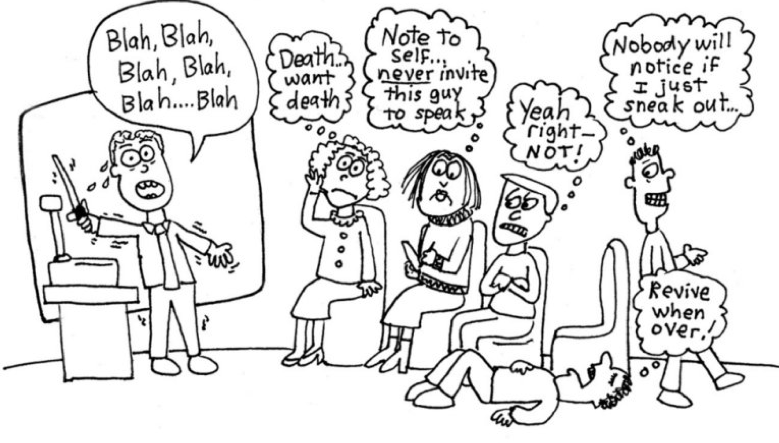Blog
October 04, 2021
Leaders Chair Meetings
The internet is full of advice on how to chair a meeting. Here is an example:
A good chair helps the meeting to run smoothly and efficiently. The person who chairs a meeting can sometimes be referred to as the ‘facilitator’.
They will make sure that:
- all the business is discussed
- everyone’s views are heard
- clear decisions are reached
- the meeting starts and finishes on time.
A good chair will also:
- always be thinking about the meeting overall, not just the topic under discussion. This can make it more difficult for you to participate in the discussions.
- always aim to draw a balance between hearing everyone’s views and getting through the business.
- never use their position as chair as an opportunity to put forward their views to the exclusion of others, or to dominate the meeting.
Normally, there is no discussion in a meeting unless there is a motion to discuss, but the Chairperson might call for a “brainstorming” session. Usually, it’s a good idea to put a time limit on such a session. A good chairperson might make sure that everyone has had a chance to speak before anybody speaks twice. Speakers should still wait to be recognized by the chair.
Don’t Abuse the Power
 The Chairperson has the power to lead the meeting, but they might also abuse that power. The most prevalent abuse is when the Chairperson speaks too much. A good Chairperson takes a turn in discussion, just like anybody else. If he/she makes a speakers list in advance, which sometimes saves time, then he/she should put himself/herself on it, just like anybody else who wants to talk.
The Chairperson has the power to lead the meeting, but they might also abuse that power. The most prevalent abuse is when the Chairperson speaks too much. A good Chairperson takes a turn in discussion, just like anybody else. If he/she makes a speakers list in advance, which sometimes saves time, then he/she should put himself/herself on it, just like anybody else who wants to talk.
A really bad and time-wasting Chairperson speaks before and after everybody, and many of them do!
The Rules
The ultimate rulebook for meetings is Robert’s Rules of Order, but common sense is far more useful. Ordinarily, discussion begins after someone makes a motion and someone else seconds it. The Chairperson tries to keep everybody on that same motion until it is voted on or withdrawn.
One Big Error
One occasional source of confusion comes when somebody makes a procedural motion. Usually, they aren’t discussed at all and must be voted on immediately.
The one that trips up many a Chairperson is a procedural motion to interrupt and end discussion on the motion being considered. Usually, they say “I call for the previous question,” or “I motion to call the question.” If they get a second, then the Chairperson immediately calls for a vote on the motion to end discussion. If it passes with a 2/3 majority, then there can be no more discussion on what was being considered and it must come to an immediate vote. If the motion to end discussion fails, then discussion continues on what was being considered.
The big error often made is this: many Chairpersons skip the vote on the motion to end discussion and call for a vote on the motion that was being considered. In other words, they have allowed two people to outfox the entire meeting!
People often think that a motion to end discussion will hurry up the meeting, but in fact, it might just make it longer.
The Chairperson can avoid the entire problem by calling for a vote on any motion when he/she thinks discussion has been sufficient. The alternative, sometimes, is to let one or two people yak on endlessly without saying anything new. Sometimes, they might be intentionally stalling!
Another Error
The procedural motion to table gives some Chairpersons problems. If someone makes a motion to table and gets a second, the Chairperson immediately calls for a vote on the procedure. If it passes, then the previous motion that was being considered is withdrawn and cannot be revived nor discussed further until the next meeting. It’s a powerful procedural motion.
Cleaning Up Messes
If members think that the Chairperson is in error, they can make an appeal from the decision of the chair. If they get a second, they get a chance to explain why they think the Chairperson should be overruled. The Chairperson gets a chance to explain his/her ruling, but nobody else gets to talk. A vote is taken on whether or not to overturn the Chair’s previous ruling. A tie goes to the Chairperson.
An appeal from the decision of the chair almost never comes up, but it is good for the Chairperson to know about it in case of being unsure about some ruling. Common sense will meet almost all needs.
–Gene Lantz
